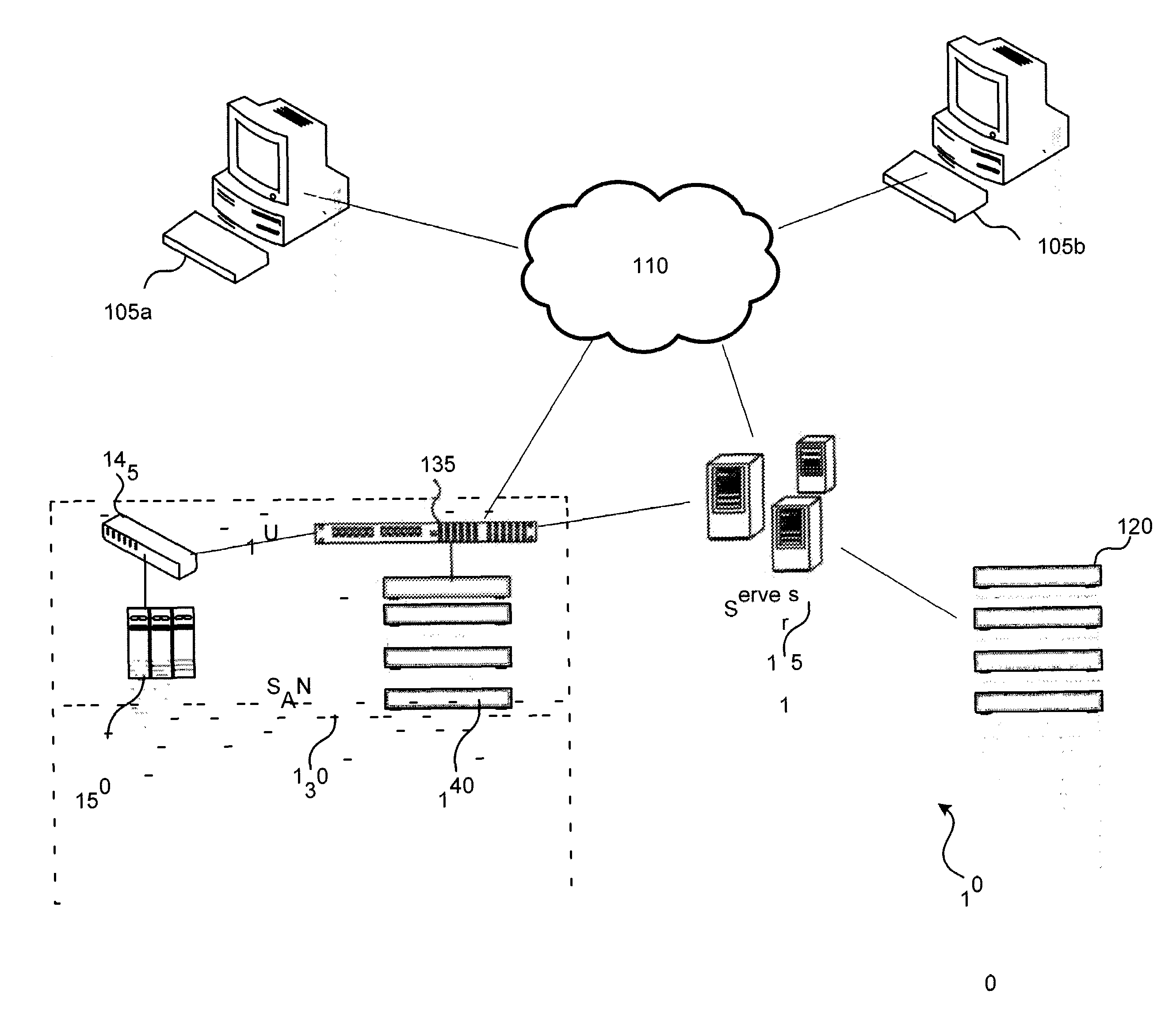Methods and systems for vectored data de-duplication
a vector data and data deduplication technology, applied in the field of data processing systems, can solve the problems of data duplication in data storage systems, large amount of electronic information duplicated, and possible collisions, and achieve the effect of lowering the probability of collisions
- Summary
- Abstract
- Description
- Claims
- Application Information
AI Technical Summary
Benefits of technology
Problems solved by technology
Method used
Image
Examples
Embodiment Construction
[0037]Various embodiments of the systems and methods described herein provides data de-duplication that may utilize a vectoring method for data de-duplication. In this vectoring method for data de-duplication, a stream of data may be divided into pieces, data blocks or chunks of data. In various embodiments, these pieces, blocks, or chunks may be the same size. In some embodiments, the block size might be selected such that the pieces, data blocks or chunks are the same size as a block on the storage media used to store the data. By selecting a block size that is the same as the block size on the media each block will fit in the block without left over space. Additionally, in some embodiments, these blocks may store a vector that points to another equal sized block.
[0038]In some embodiments, a block size that does not match the size of a block on a data storage device may be used. For example, in some embodiments, a logical block might be used. The logical blocks might be made up of...
PUM
 Login to View More
Login to View More Abstract
Description
Claims
Application Information
 Login to View More
Login to View More - R&D
- Intellectual Property
- Life Sciences
- Materials
- Tech Scout
- Unparalleled Data Quality
- Higher Quality Content
- 60% Fewer Hallucinations
Browse by: Latest US Patents, China's latest patents, Technical Efficacy Thesaurus, Application Domain, Technology Topic, Popular Technical Reports.
© 2025 PatSnap. All rights reserved.Legal|Privacy policy|Modern Slavery Act Transparency Statement|Sitemap|About US| Contact US: help@patsnap.com



